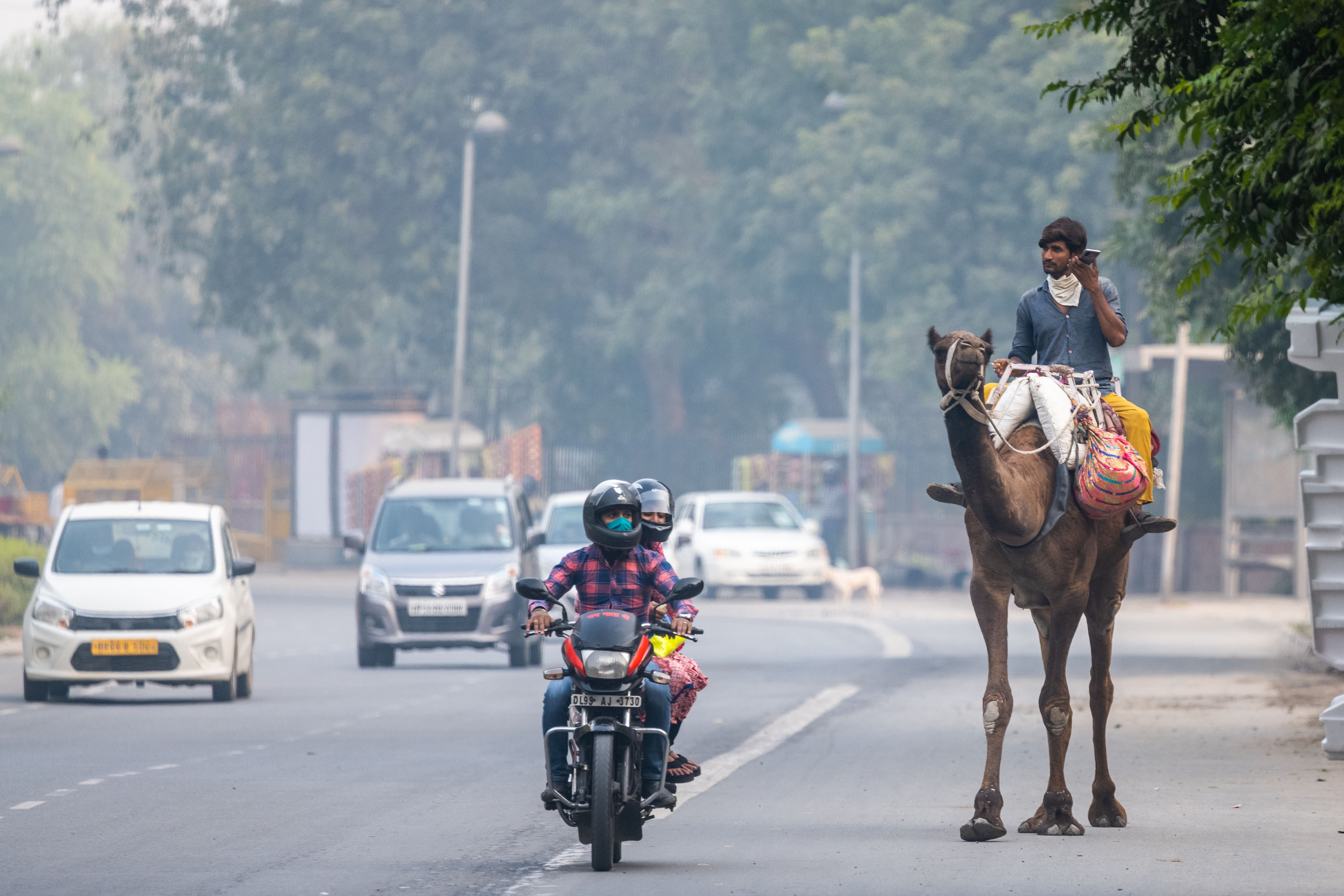Delhi's air pollution soars to worst level in almost a year, even as Covid cases in capital spike
‘Worst is yet to come’, experts say as winter sets in and the Diwali festival season arrives

Your support helps us to tell the story
From reproductive rights to climate change to Big Tech, The Independent is on the ground when the story is developing. Whether it's investigating the financials of Elon Musk's pro-Trump PAC or producing our latest documentary, 'The A Word', which shines a light on the American women fighting for reproductive rights, we know how important it is to parse out the facts from the messaging.
At such a critical moment in US history, we need reporters on the ground. Your donation allows us to keep sending journalists to speak to both sides of the story.
The Independent is trusted by Americans across the entire political spectrum. And unlike many other quality news outlets, we choose not to lock Americans out of our reporting and analysis with paywalls. We believe quality journalism should be available to everyone, paid for by those who can afford it.
Your support makes all the difference.A dense haze engulfed India’s capital Delhi on Thursday as it recorded its worst air quality of the year, at the same time as new coronavirus cases hit record numbers in the capital.
The most toxic day of the year saw levels of PM2.5 (small particulate matter) 14 times the safe limit set by the World Health Organisation.
The overall air quality index (AQI), which includes other pollutants besides PM2.5 particles, crossed 460 on a scale of 500, the worst figure since 14 November 2019.
Delhi suffers its worst phase of air pollution every year as the winter sets in and the seasonal phenomenon of stubble burning by farmers in nearby agrarian states begins.
This year, however, the already deadly situation is made worse for the capital’s residents by a rising threat of Covid-19. The city has more than 400,000 confirmed cases of coronavirus among a population of more than 20 million, and reported 6,842 new cases on Wednesday – a record since the pandemic began.
Doctors are seeing a sharp increase in people reporting respiratory symptoms, often ones that could be caused by the choking smog or the virus alike, leading to heightened fear among patients.
On Thursday, India’s federal air quality and weather monitoring agency recorded 4,135 incidents of farm fires - the highest of the season so far. Fireworks set off for the Hindu festival of Karwachauth on Wednesday added to the problem, experts said, and were a drop in the ocean compared to those that usually mark the approaching festival of lights, Diwali.
Delhi’s chief minister Arvind Kejriwal said late on Thursday that the local government would impose a complete ban on fireworks this Diwali, after a meeting reviewing the Covid-19 situation.
Karthik Ganesan, a research fellow with the Council on Energy, Environment and Water (CEEW) said he fears that the “worst is yet to come”.
“The amount of burning you see in winters locally, with the number of homeless around, is huge, and there’s nothing to warm them up. October has already been one of the coldest in years. We are going to see phenomenal amount of burning, although the saving grace may be that the commercial activity is less."
Delhi’s strict coronavirus lockdown has almost entirely lifted, however, and government efforts to revitalise the economy with heightened commercial activity could lead to some “terrible days” for air quality by December, he said.
If the air quality stays in the “severe” category for 48 hours, authorities can impose emergency measures that include barring vehicles from entering Delhi, shutting down construction, and reducing traffic through an odd-even system for private cars, measures that the city has been taking every year when pollution peaks.
With the worsening air, many people have been complaining of respiratory problems. Rahul Ojha, a resident who tagged the authorities in a post on Twitter, said: "Woke up with a feeling that poisonous garbage is stuck in my windpipe."
Deadly PM2.5 particles are less than 2.5 microns in diameter, meaning they can penetrate the lungs and enter the blood system, potentially causing cardiovascular and respiratory diseases including lung cancer, according to the WHO.
Many residents have blamed the government for not doing enough to tackle the pollution crisis.
Join our commenting forum
Join thought-provoking conversations, follow other Independent readers and see their replies
Comments